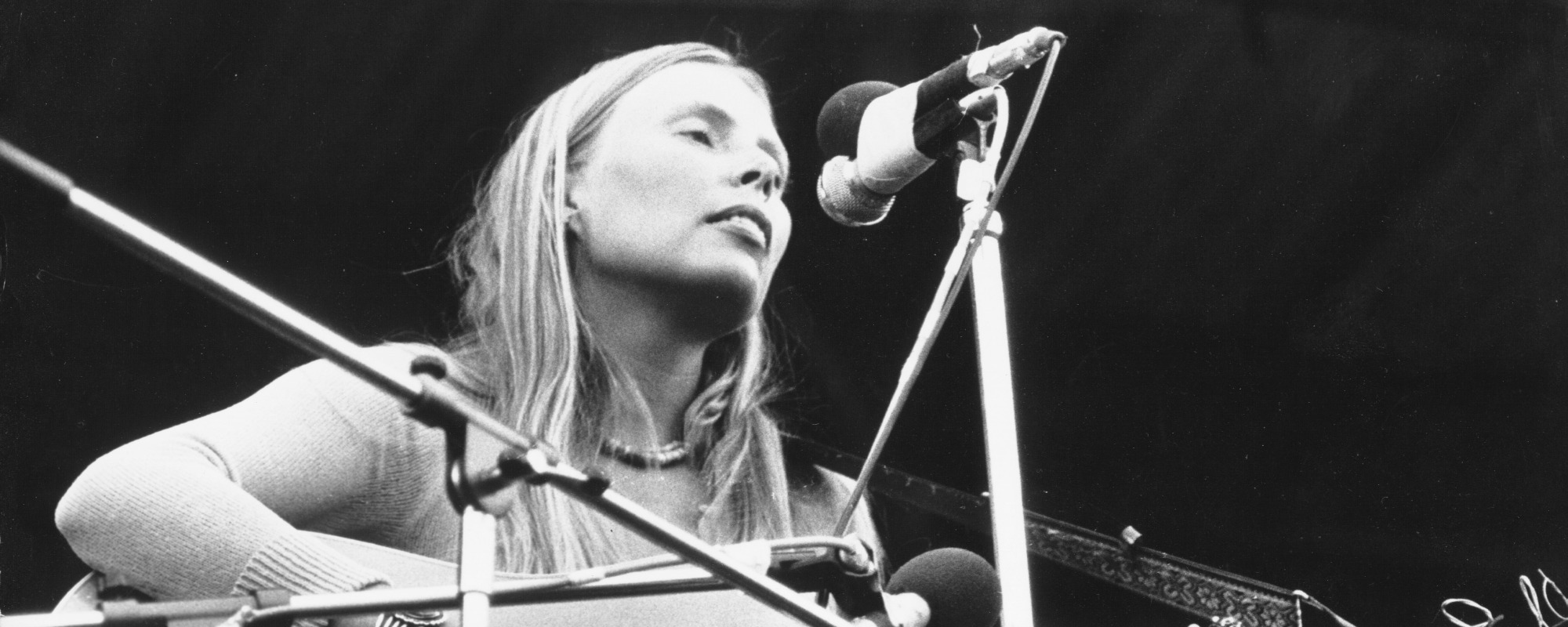It doesn’t take a musical savant to recognize Joni Mitchell’s unique approach to music. But as it turns out, it might not even help if you were. Mitchell’s novel navigation of the fretboard stumped even the biggest musical stars in the 1960s and ‘70s.
Videos by American Songwriter
Far and away from the pop-sensible “cowboy” chords à la A, E, and D major, Mitchell’s chord progressions were rich with color. Dissonant notes bounced against one another between wide intervals of consonant, North Americana harmony. These chords are what set Mitchell apart from her folk contemporaries. They make Joni, Joni.
And according to the songwriting master herself, they have a name: chords of inquiry.
Chords of Inquiry
Joni Mitchell released her debut album ‘Song to a Seagull’ in 1968, a time when most popular music centered around easily digestible harmonies: major mostly, if not an unthreatening aeolian minor. Mitchell’s uncommon open tunings opened the door for non-diatonicism. Using shapes not dissimilar to standard tuning’s chords, Mitchell created a musical landscape entirely her own. People noticed—and questioned.
“For years, people said, ‘Joni’s weird chords, Joni’s weird chords,’” Mitchell once said. “Chords are a depiction of emotions, these chords that I was getting by twisting the knobs on the guitar until I could get these chords that I heard inside that suited me. They feel like my feelings. I called them, not knowing, chords of inquiry” (via Joni Mitchell: New Critical Readings).
Joni Mitchell’s Departure From Dichotomous Emotion
Mitchell expounded on her chords of inquiry and unresolved emotionality during a 2013 interview at the TimesTalks Luminato Festival. Speaking of the sus-chords that she prominently featured in her music, Mitchell said, “It’s an unresolved chord with a question mark in it, and my life was full of… Well, all of our lives. The bomb was hanging over it…My daughter then was missing…My life was full of question marks and full of surprises. So, my music, too, was like my life” (via Joni Mitchell’s website).
In another interview cited in Joni Mitchell: New Critical Readings, the “Case of You” singer argued her case against dichotomous emotion in music. Western tradition dictated that major chords were typically happy and minor chords were typically sad. For Mitchell, her emotions were far more complex than any two categories could cover.
Mitchell said to express this musically, “My major chord will have a dissonant note leading to sorrow, then another note leading back to joy. There is always the possibility of the opposite emotion in my chords.”
A Sound All Joni’s Own
Joni Mitchell’s compositional style wasn’t just true to her emotional self. It was a testament to the physical hardships she endured as a child, too. Mitchell’s mother had the mumps while pregnant with Joni, and at the age of 9, the future folk star contracted polio. Her childhood illnesses caused her left (chording) hand to be stiff and hard to maneuver. She learned to play open tunings instead, and the rest was history.
Indeed, Mitchell imbued every facet of her songwriting with her being’s essence. From her intense emotional connection to harmony to her 50+ self-made tunings, she created a sound wholly unique to herself. She not only held her own as a woman in a male-dominated industry. Her “chords of inquiry” stumped even the most seasoned of her male counterparts, including a young Bob Dylan.
In a 1987 interview with Rolling Stone, Dylan praised Mitchell’s eccentricity. “Joni’s got a strange sense of rhythm that’s all her own,” Dylan said. “She lives on that timetable. Joni Mitchell is in her own world all by herself, so she has a right to keep any rhythm she wants. She’s allowed to tell you what time it is.”
(Photo by Michael Ochs Archives/Getty Images)













Leave a Reply
Only members can comment. Become a member. Already a member? Log in.